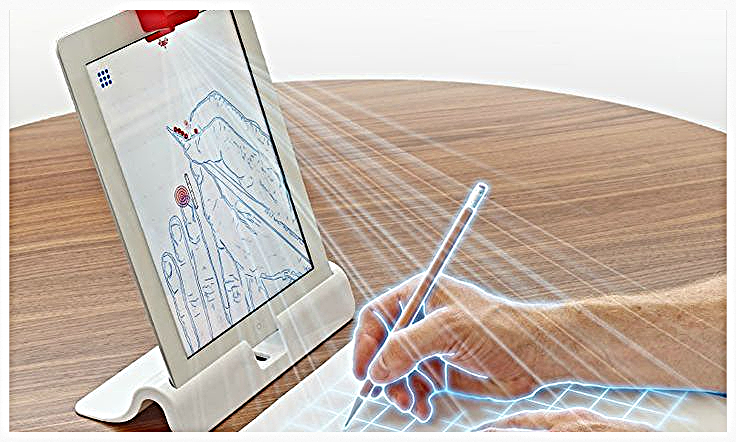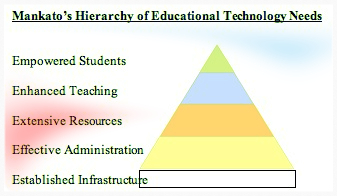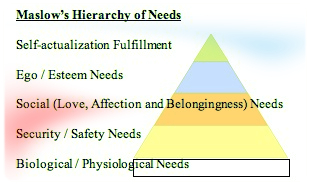
Establishing the Hierarchy of Educational Technology Needs
There is a clear parallel between Maslow's Hierarchy of Needs and Mankato's Hierarchy of Educational Technology Needs. The foundation of the pyramid is a stepping stone to the apex of self actualization and fulfillment. If one element of the pyramid is missing the entire pyramid will collapse and the ultimate goal of self fulfillment will not be reached. Doug Johnson, the author of A Classroom Teacher's Survival Guide, discovered a parallel to the hierarchy of needs when it comes to educational technology. The foundation needed to build a strong technologically sound school begins with an established infrastructure and develops into a school of technology empowered students. Similar to the hierarchy of needs, if one section of the pyramid is missing the top will never be discovered. Since his book was written in 2012 I believe that more elements need to be considered within each stepping stone of the technology needs pyramid. Throughout the implementation process of technology and 21st century skills I have adapted it to various elements Waukee already has a framework for, including: growth mindsets, 21st century skills, PLCs, and Leader In Me.


1. Established Infrastructure:
When building a foundation for students and teachers to consider how technology can build 21st century skills a specific mindset in the school needs to be established. If teachers and students take on a growth mindset they will be able to use flexible thinking, be optimistic when their plan doesn't work at first, be resilient through challenging moments, and be persistent through the process of learning and creating. If teachers and students portray a fixed mindset, none of the other building blocks to the ultimate goal can be established. A strong foundational growth mindset is critical in order to reach the apex of the technology pyramid.
2. Effective Administration and Teachers
Once the foundation of a growth mindset has been constructed within the school, technology teachers will need to collaborate with K-5 PLCs. This will create a support system for students and show them that the process of technology integration and 21st century skills is done as a team and can be carried out in all aspects of their education and throughout their life. It will also give technology teachers and classroom teachers the opportunity to share units of study students are working on in class. Technology teachers can use this information to build connections between the classroom and various ways that students could develop those connections through technology.
3. Extensive Resources
"If teachers are to design curriculum materials, instructional units, student activities, and assessment tools that teach 21st-century skills, they will need more extensive information resources than in the past" (Johnson, Doug. The Classroom Teacher's Technology Survival Guide). Teachers will need a variety of technology devices to provide students opportunities to communicate, access, process, photograph, video, code, and recreate. Some possible technology resources that could lead to building 21st century skills include:
4. Enhanced Teaching
In addition to a growth mindset, a team of teachers and students willing to work with one another, and extensive technology resources to support 21st century learning skills, there must be a component of enhanced teaching. Teachers must go beyond the thoughts of, "What games are available for my students to play?" to "How can I transform learning through technology?" One of the ways that teachers can transform learning through technology lies within the 21st Century Universal Constructs. The skills needed to transform the learning process include: being creative, using problem solving-skills, being flexible, holding others accountable, collaborating, and communicating with one another. If teachers consider these life-long skills while planning for technology integration, then students will have a more enhanced learning experience.
21st Century Universal Constructs
5. Empowered Students
The peak of the process is whentransforming technology into a process of innovation and using 21st century skills simultaneously, is student empowerment. When students become passionate about how to create through different technology resources they want to share and teach others. This could be in the form of teaching a buddy class, having student tech leaders hold passion groups for other students in the building, and students teaching teachers. There are many more ways that students could feel empowered through technology, but the ultimate goal is that they find their voice to create what they want and lead others to do the same. Leader in Me ties in perfectly with student empowerment through technology use. Throughout the process of establishing Leader in Me in a school, students are building life-long leadership habits that overlap with 21st century skills in order for students to be successful in the world we live in today. "It means being able to determine if the use of technology is making our children better citizens, better consumers, better communicators, better thinkers— better people" (Johnson, Doug. The Classroom Teacher's Technology Survival Guide, edited by Doug Johnson, John Wiley & Sons, Incorporated, 2012. ProQuest Ebook Central). When students have reached the apex of technology development and have incorporated their 21st century skills along the way, we will know our ultimate goal has been met.